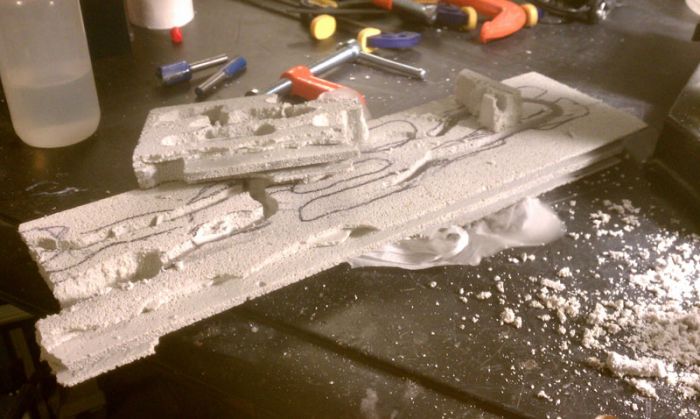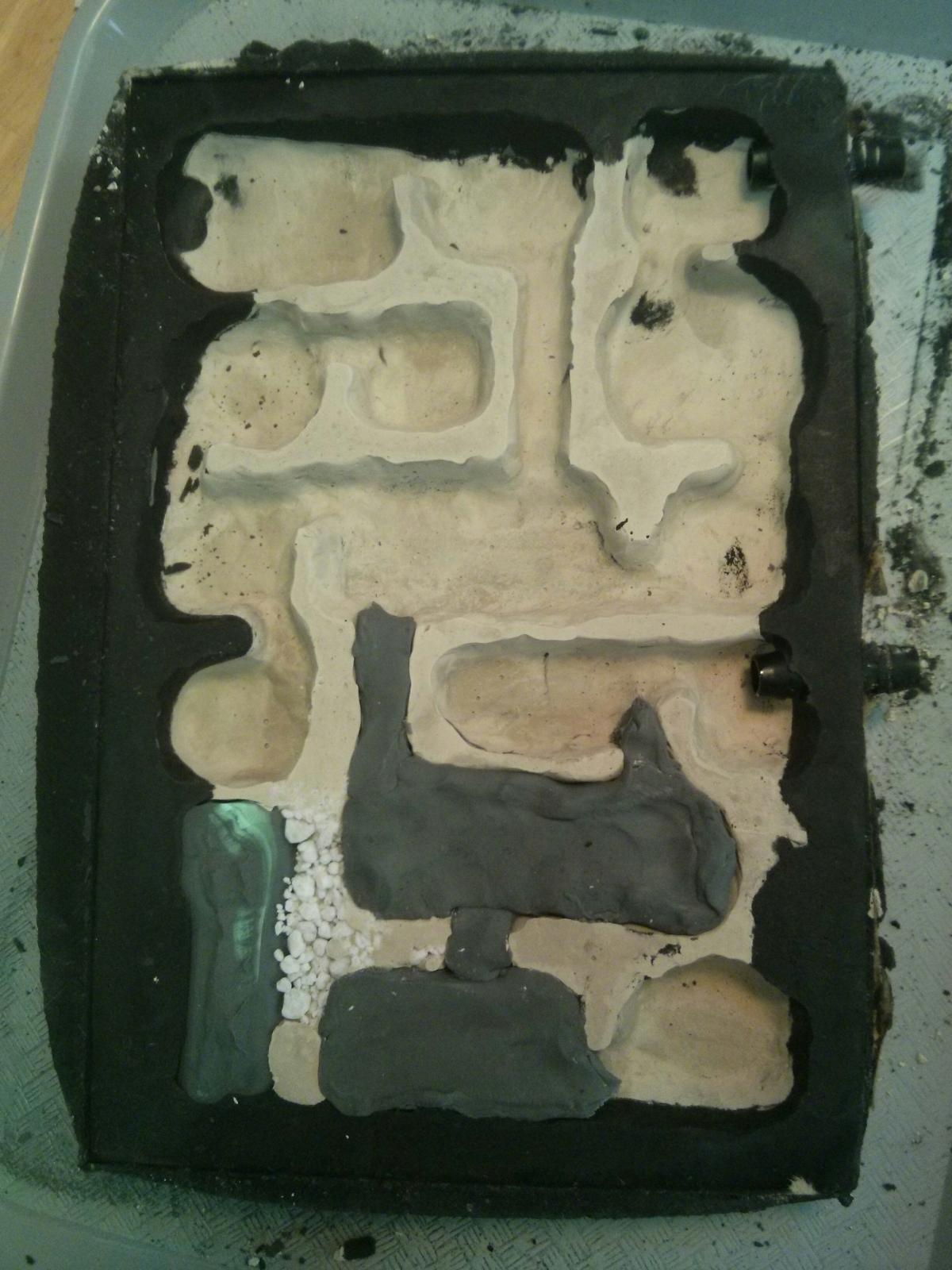- Formiculture.com
- Forums
- Gallery
- Members
- Member Map
- Chat

You guys make formicarium building look easy
Started By
spinyeti
, Aug 20 2015 5:31 AM
9 replies to this topic
#1
 Offline
-
Posted August 20 2015 - 5:31 AM
Offline
-
Posted August 20 2015 - 5:31 AM
I attempted to build a grout formicarium last night, using both sanded and nonsanded grout per Crystals's walk-through.
I currently have a mess that I'm letting dry, hoping the front looks a lot better than the back.
I'm probably going to scrap it all and try again with just nonsanded grout.
My plans were too ambitious, too fancy for a first try.
I currently have a mess that I'm letting dry, hoping the front looks a lot better than the back.
I'm probably going to scrap it all and try again with just nonsanded grout.
My plans were too ambitious, too fancy for a first try.
#2
 Offline
-
Posted August 20 2015 - 7:15 AM
Offline
-
Posted August 20 2015 - 7:15 AM
Luckily, the front always looks better (usually).
I never took pictures of my first dozen attempts - for good reason, as they went straight to the trash. ![]()
I found the ratios are actually quite flexible - it is the clay or mold material that is important. Clay that can air dry does not work and causes the grout to crack. Any oil based clay - or "never-drying" clay works fine.
PS. don't even try homemade plasticine... That was the absolute worse tunnel mold material I ever tried. There were so many cracks that it actually broke into a 35 piece puzzle. ![]()
Using all non-sanded grout also works fine, just add little rubber feet to the back to prevent any moisture from warping wood or damaging the surface it is set on.
My neighbor once saw me mixing grout and told me, "don't you read the instructions? You aren't supposed to add that much water to grout." I then explained that I was not using it on a tile floor, but making an ant nest. He came over the next day to see it when I took it out of it's mold.
Post pictures of your completed piece, I love seeing how people do things differently and use different styles.
- spinyeti likes this
"Always do right. This will gratify some people, and astound the rest." -- Samuel Clemens
#3
 Offline
-
Posted August 20 2015 - 7:22 AM
Offline
-
Posted August 20 2015 - 7:22 AM
Don't feel too bad. This is what my wonderful idea turned out like when I first got into this.

- spinyeti and nofuel11 like this
#4
 Offline
-
Posted August 20 2015 - 8:13 AM
Offline
-
Posted August 20 2015 - 8:13 AM
Post pictures of your completed piece, I love seeing how people do things differently and use different styles.
I'll take a picture when I open it up this weekend. I'm hoping it's decent. If not, I've not lost much material and gained valuable experience.
#5
 Offline
-
Posted August 20 2015 - 8:45 AM
Offline
-
Posted August 20 2015 - 8:45 AM
Yeah, the reason they look so good is practice. So much of the things you see people selling are very 'I could do that' but they've had lots of practice with the specific tools and materials they're using and have developed their own techniques and such. So definitely don't be discouraged.
#6
 Offline
-
Posted August 20 2015 - 8:45 AM
Offline
-
Posted August 20 2015 - 8:45 AM
When the wife tried so couldn't wait long enough to let it harden and it kept breaking, after the pieces sat for a week they were so hard i couldn't break them if i tried and that was with sanded grout too so maybe try and let it dry for a week before touching it
#7
 Offline
-
Posted August 24 2015 - 4:18 AM
Offline
-
Posted August 24 2015 - 4:18 AM
So the final result was much better than I had expected! Here you can see the front, mostly cleaned up and just prior to addressing the ungrouted perlite. I left some clay in the bottom to repair/cover up my perlite mistake, and my whole setup is undergoing initial heatpad testing tonight. I need to dial in the on/off settings for the timer I'm using to help with temperature regulation.
Edited by spinyeti, August 24 2015 - 4:20 AM.
#8
 Offline
-
Posted August 24 2015 - 6:03 AM
Offline
-
Posted August 24 2015 - 6:03 AM
Pretty good, if time is not an issue, an alternative to fixing the mistake is to remove the clay and mix up a teaspoon of grout and patch it. I use a kids paintbrush to apply it.
"Always do right. This will gratify some people, and astound the rest." -- Samuel Clemens
#9
 Offline
-
Posted August 24 2015 - 8:46 AM
Offline
-
Posted August 24 2015 - 8:46 AM
Time was no issue. What I had done was mix up some grout and made sure it was quite loose. I poured it in from the front, and used a toothpick to coax it down into the loose perlite. I had left the clay temporarily to hold the shape I wanted. It doesn't look as smooth, but I think it will be fine, especially when I seal around that lower left water reservoir area with a bead of aquarium silicone.
#10
 Offline
-
Posted August 24 2015 - 11:51 AM
Offline
-
Posted August 24 2015 - 11:51 AM
Great work! I'm think of buying the "Ant Mine" plastic piece to use as a mold fory grout projects from now on. Look at how nice the mold is! Not my picture.
Species I keep:
1 Lasius cf. Neoniger 30 workers
1 Camponotus sp. 15 workers
20 Tetramorium SpE 30 workers
1 T. Sessile 200 workers
1 user(s) are reading this topic
0 members, 1 guests, 0 anonymous users



















